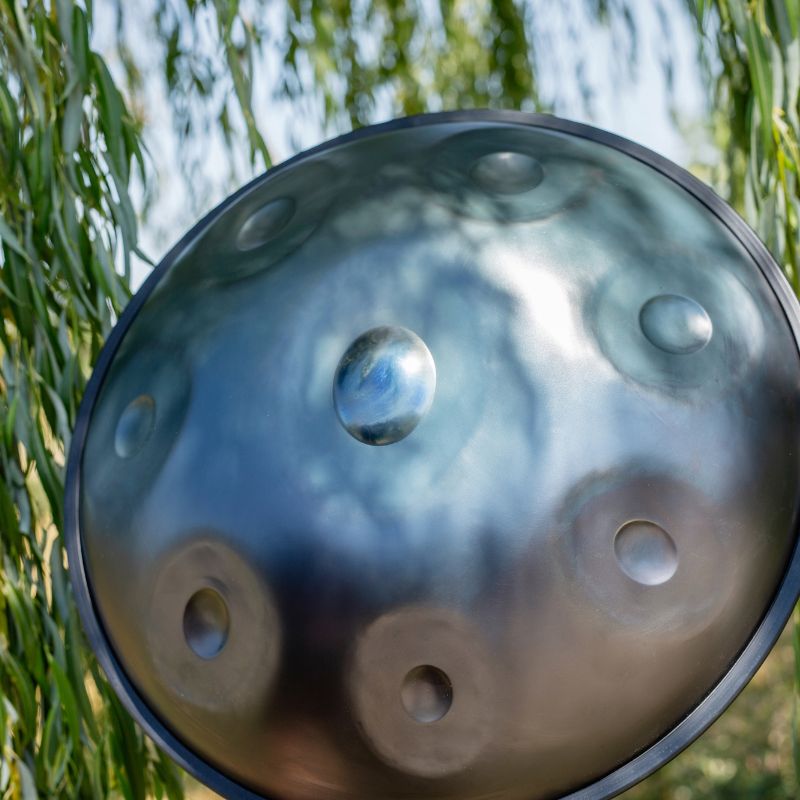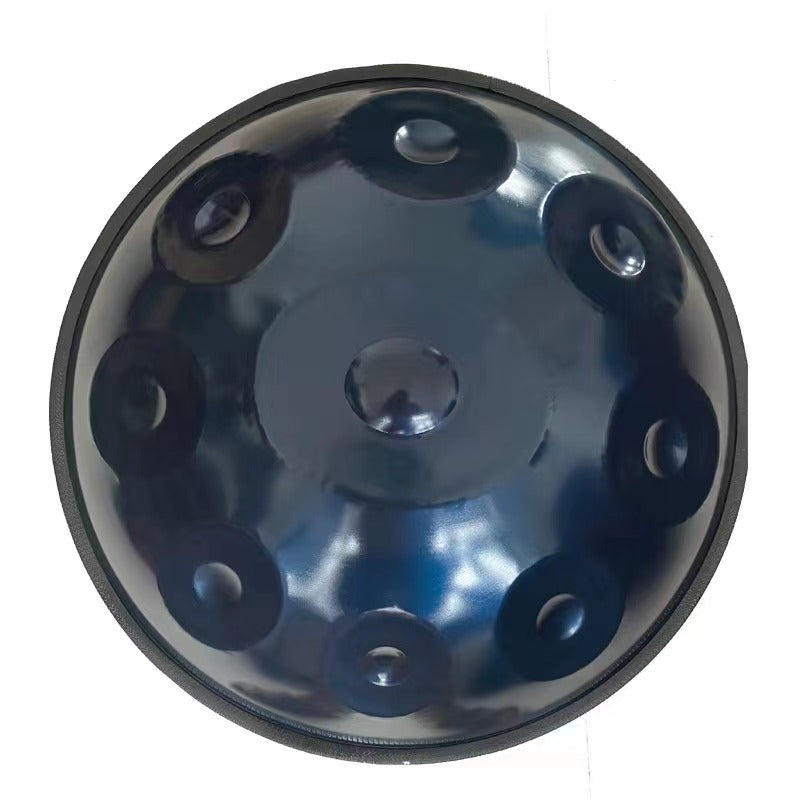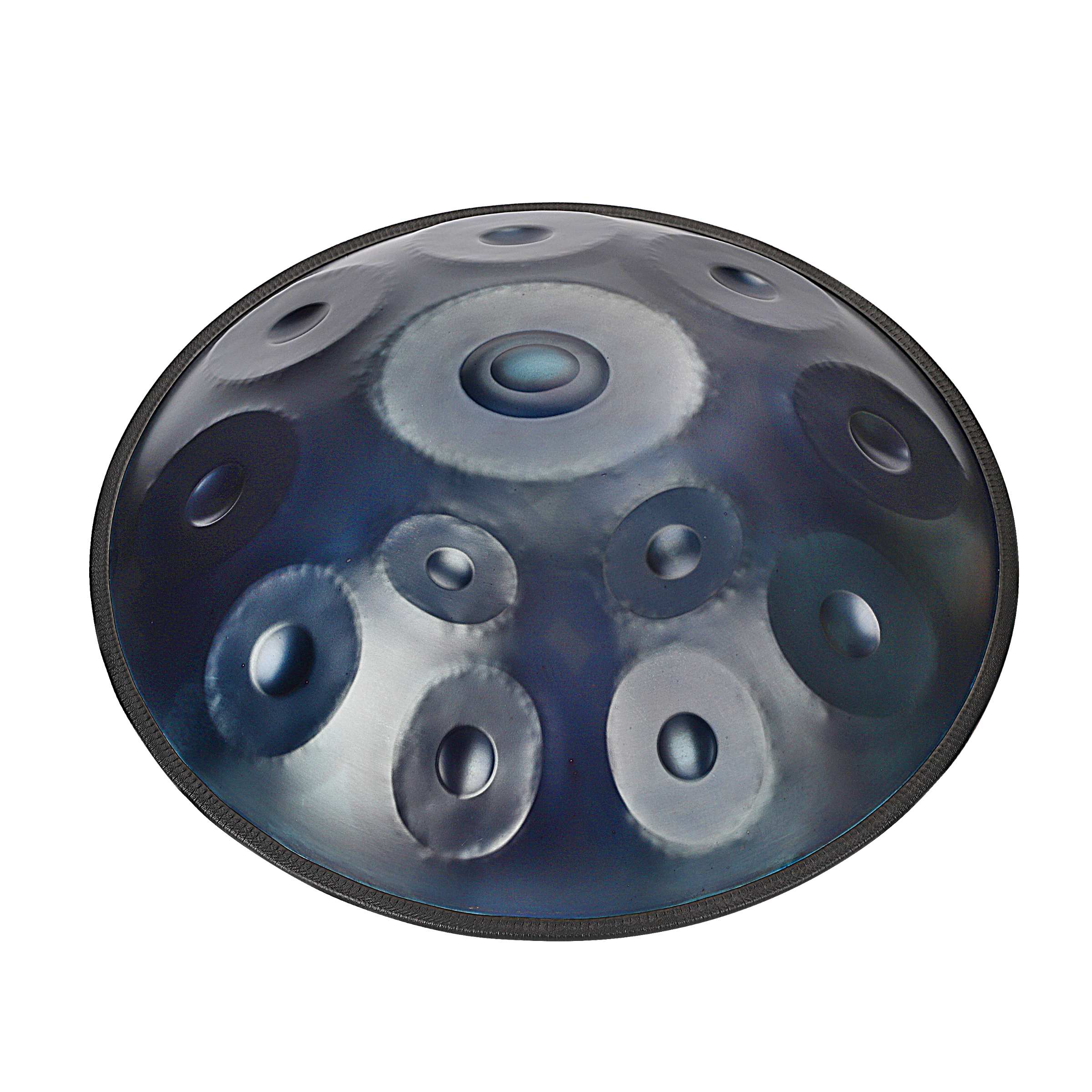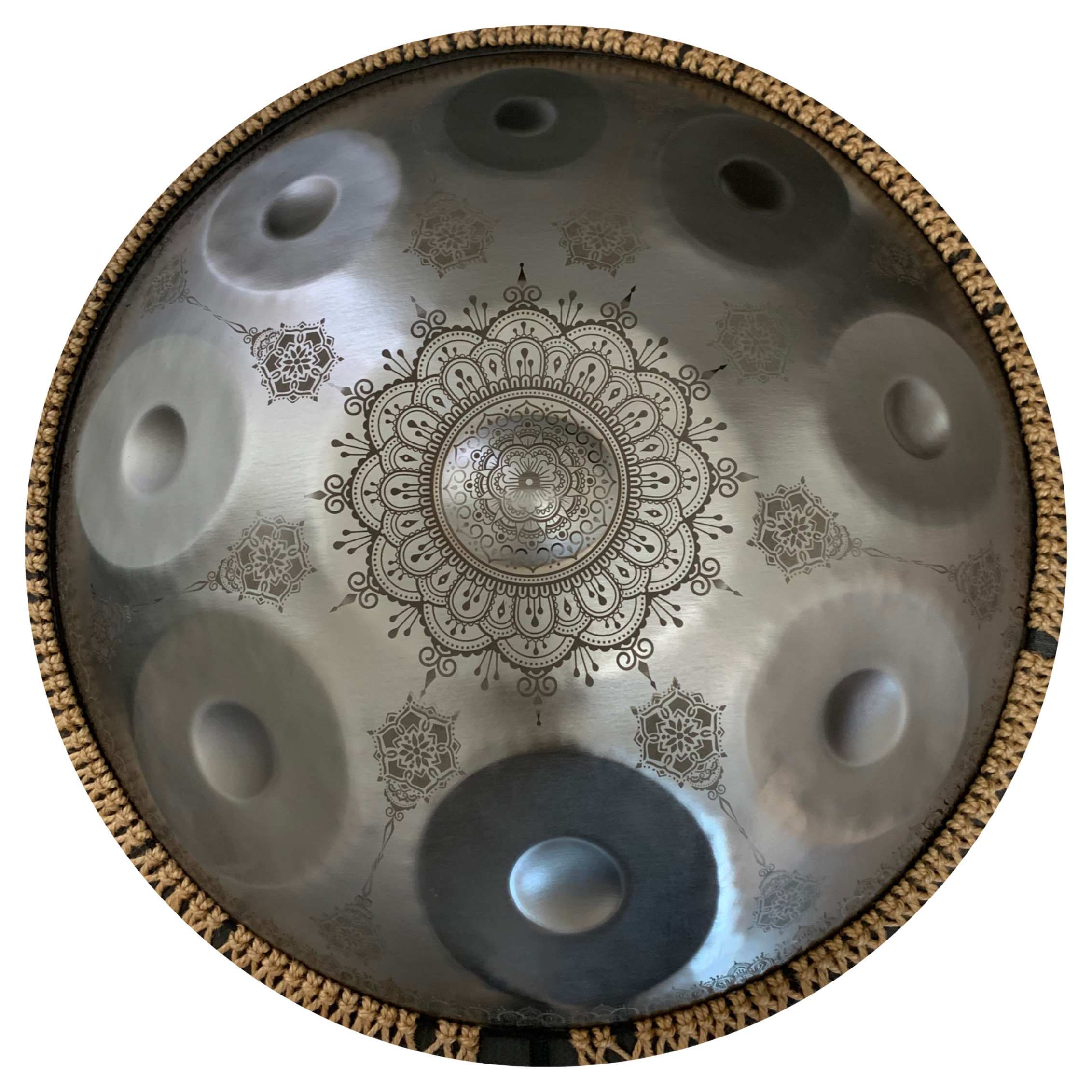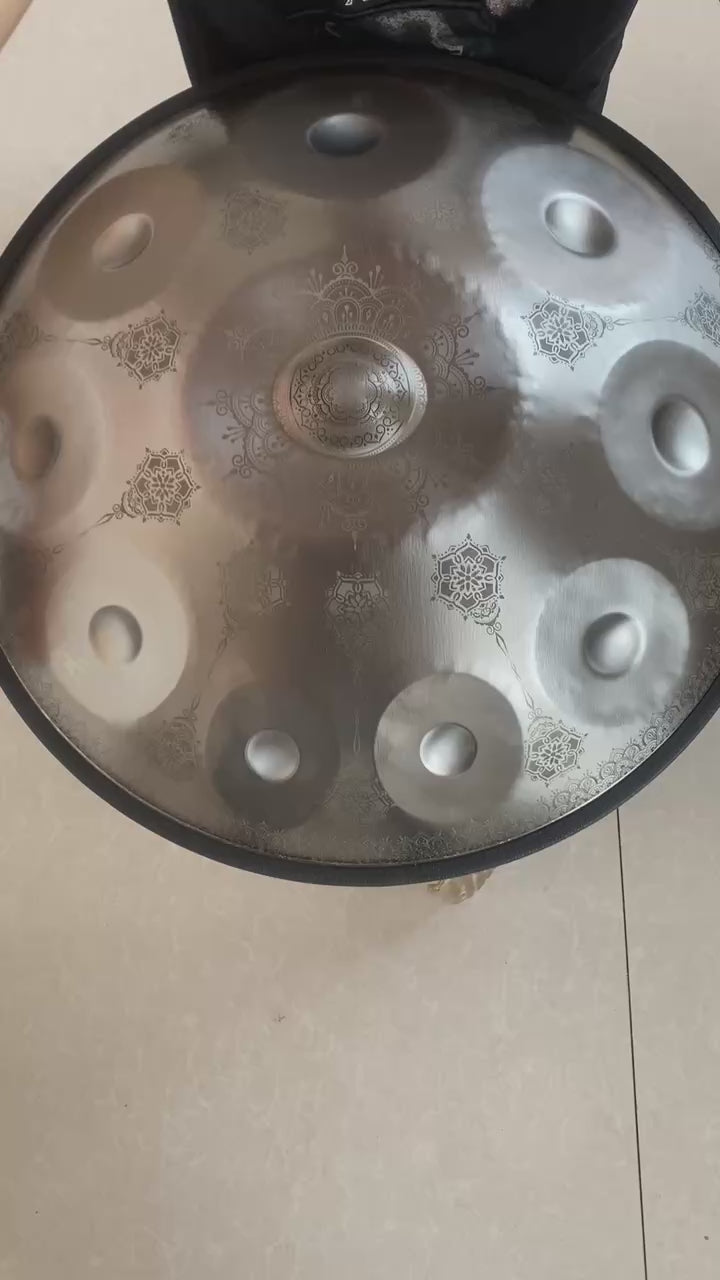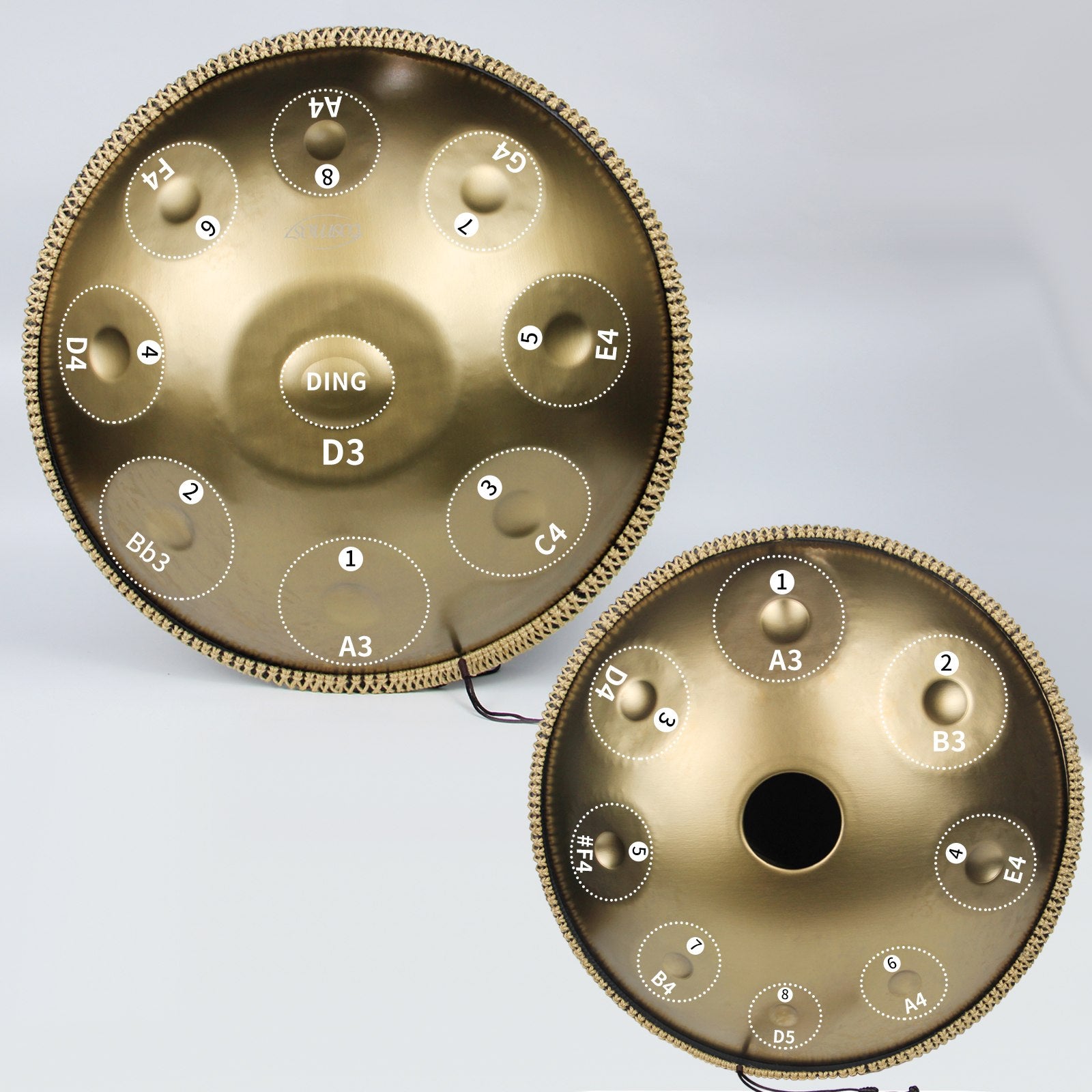L'importance du nettoyage :
Un nettoyage régulier est essentiel non seulement pour l'attrait visuel de votre handpan, mais aussi pour préserver ses qualités tonales. La poussière, les huiles et les particules environnementales peuvent s'accumuler à la surface et à l'intérieur des notes, affectant la résonance de l'instrument et sa jouabilité globale. Un handpan propre non seulement a une belle apparence, mais garantit également un son clair et vibrant.Facteurs influençant la fréquence de nettoyage :
La fréquence de nettoyage de votre handpan peut être influencée par divers facteurs :Fréquence d'utilisation : Si vous jouez de votre handpan régulièrement, il peut accumuler plus d'huiles et de débris provenant de vos mains, influençant ainsi la nécessité d'un nettoyage plus fréquent.
Conditions environnementales : Le climat et la qualité de l'air dans votre région peuvent influencer la rapidité avec laquelle votre handpan accumule la poussière et les particules. Les environnements humides peuvent nécessiter plus d'attention pour prévenir l'oxydation, tandis que les climats plus secs peuvent entraîner une accumulation de poussière.
Conditions de stockage : Ranger votre handpan dans un étui de protection lorsqu'il n'est pas utilisé peut réduire considérablement la quantité de poussière et de débris qu'il accumule, influençant ainsi la fréquence de nettoyage nécessaire.
Inspection visuelle :
Effectuer une inspection visuelle est un moyen pratique d'évaluer quand votre handpan a besoin d'être nettoyé. Recherchez toute poussière visible, des empreintes digitales ou des signes d'oxydation. Si la surface semble terne ou manque de son éclat d'origine, il est peut-être temps de procéder à une séance de nettoyage.Étapes de nettoyage de base :
Lorsque vous nettoyez votre handpan, suivez ces étapes de base :Élimination de la poussière : Utilisez un chiffon doux et sans peluches pour enlever délicatement la poussière de surface. Évitez les matériaux abrasifs qui pourraient rayer la finition.
Nettoyage des billets : Pour nettoyer les billets, une petite brosse douce ou une bombe d'air comprimé peut être efficace pour déloger les particules. Assurez-vous que la brosse ou l'air est utilisé doucement pour éviter d'endommager.
Essuyage de surface : Humidifiez un chiffon propre avec une solution douce d'eau et un savon doux au pH équilibré. Essuyez toute la surface, y compris le bord et les notes, puis utilisez un chiffon sec pour enlever toute humidité.

